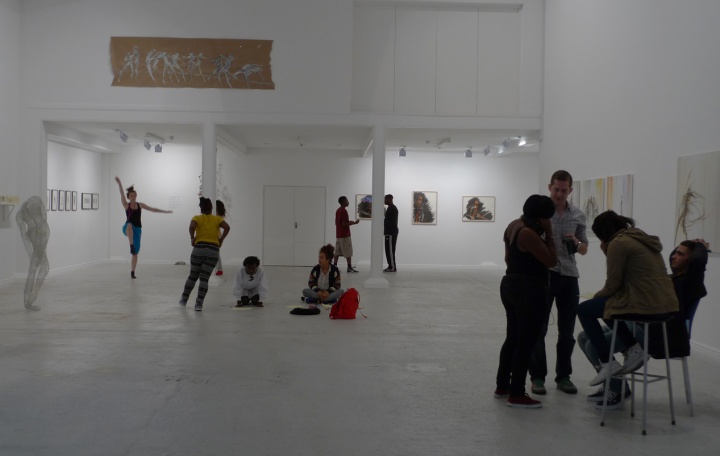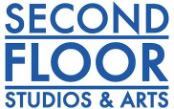Sally McKay: Multisensory experience and artistic images of the moving human figure – Opening 13.09.12
Solo performances: Yolande Yorke-Edgell and Jack Jones (Yorke Dance Project)
_______________________________________________________
Lewisham College Dance Dept: 1st Year students gallery visit 14.09.12
Lewisham College Dance Dept: Rehearsal in no format 14.09.12
Performances: Friday 21st September – 2pm
Sally McKay: Multisensory experience and artistic images of the moving human figure
no format gallery
Sally McKay: Multisensory experience and artistic images of the moving human figure
Opening – Thursday 13th September (5pm – 9pm) Until Sun 23th September – no format gallery open Thursday to Sunday 11am – 6pm
The response of painters to the challenge posed by photography is evident in the changes which occurred from the late 19th Century onwards in the way paintings were used to record recognisably human figures. Photographs of apparently moving human figures became source material for artists like Edgar Degas who used them to endow the human figures in their figurative objective artworks with naturalistic forms and apparent movements. Dissatisfaction with the attempts of photographers like Eadweard Muybridge to adequately record the trajectories of moving figures led Étienne Jules Marey to invent different types of chronophotographic camera for this purpose. Chronophotographic attempts to visualise previously invisible phenomena led early 20th Century visual artists like the Italian Futurists to base their attempt to use artworks to achieve the same goal both on Henri Bergson’s ‘cinematographical’ theory of visual perception and aesthetics; and on the use of synaesthetic (sensory perceptual) analogies and pseudo-synaesthetic (extra-perceptual linguistic metaphorical) analogies between sensible forms in different modes of perception to record their multisensory perceptions in visual artworks. Like these Italian Futurist artists, Sally McKay seeks to immerse spectators in the multisensory perceptions of moving human figures recorded in her visual artworks.
The early 20th Century eurythmic dance theorists Emile Jaques-Dalcroze and Jean d’Udine argued that seeing ‘morphocinetic’ arabesque lines caused a spectator’s ‘muscular sense’ to arouse resonations in different modes of this spectator’s perception. This muscular sense governed the synaesthetic ‘art of gesture’ used by visual artists to orchestrate and identify the physiological rhythms of their bodies with the physical rhythms of music, painting and sculpture; and in particular by dancers to visibly express their invisible ideas, emotions and feelings. A spectator’s endowment of morphocinetic arabesque lines with a muscular sense also aroused this spectator’s visual perception of such ‘muscular’ lines as a ‘living symphony’ of human movement. Dalcroze and Udine’s ideas inspired the semi-abstract paintings of moving human figures by artists like Frantisek Kupka and Francis Picabia. McKay’s envisaging of her multisensory perceptions of moving human figures as lines, colours and shadows in her artworks relies both on visual memory-images abstracted from her visual sensations, and on body memory-images abstracted from muscular sensations of her body movements. McKay uses such body memory-images to coordinate her multisensory perceptual making of artworks during collaborative events where moving human figures may experience a loss both of personal subjectivity, and of the distinction of their bodies from the ‘living’ atmospheres of light and sound in which they are immersed.
Text: Stephen Baycroft Copyright 2012













1 comment